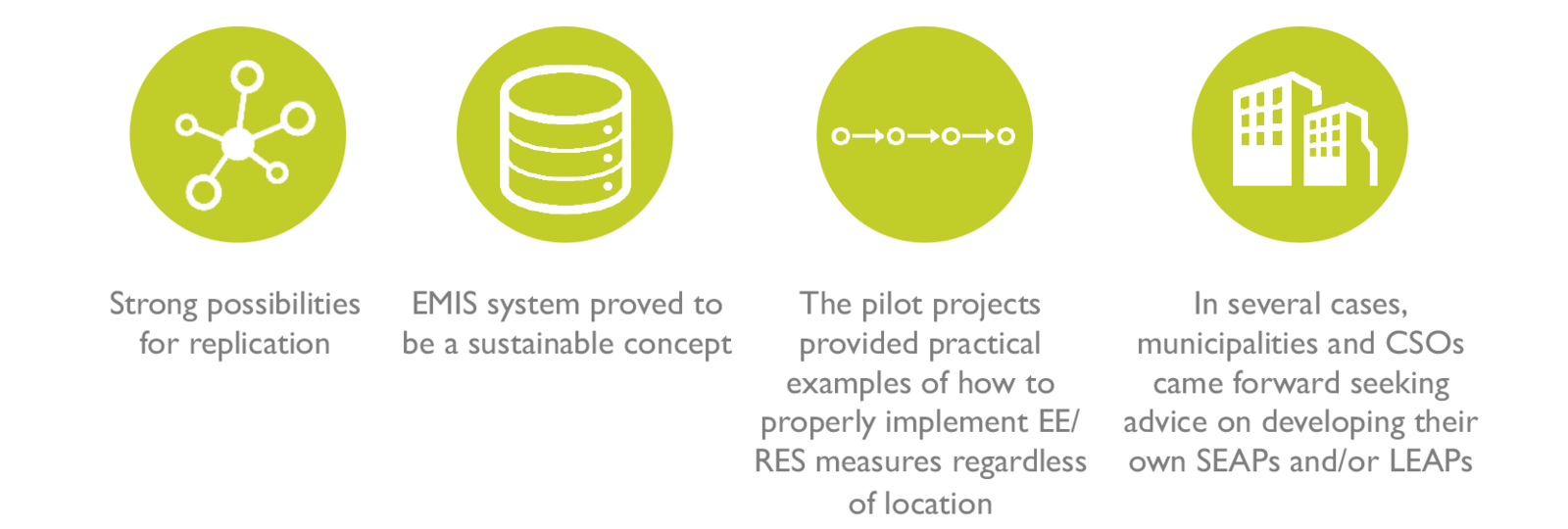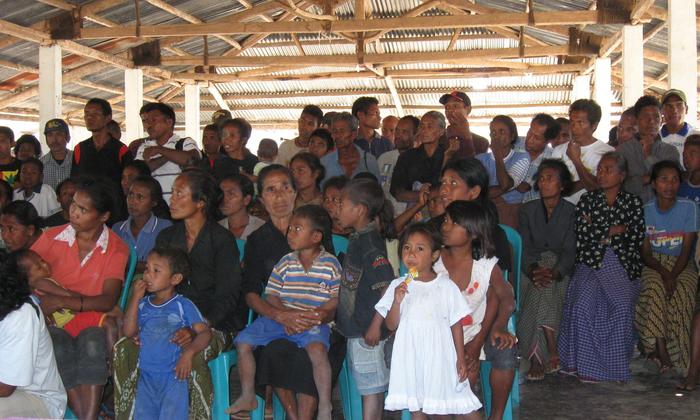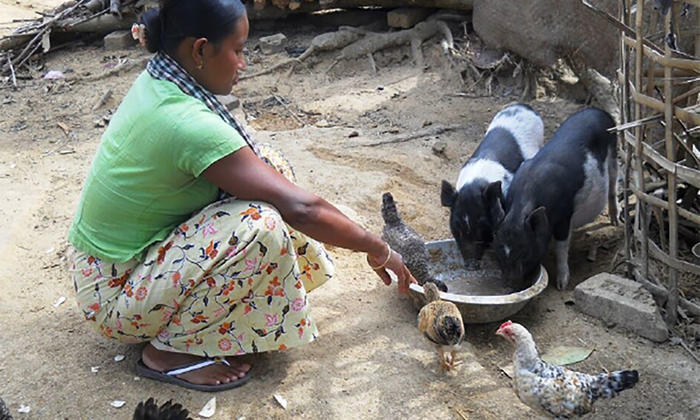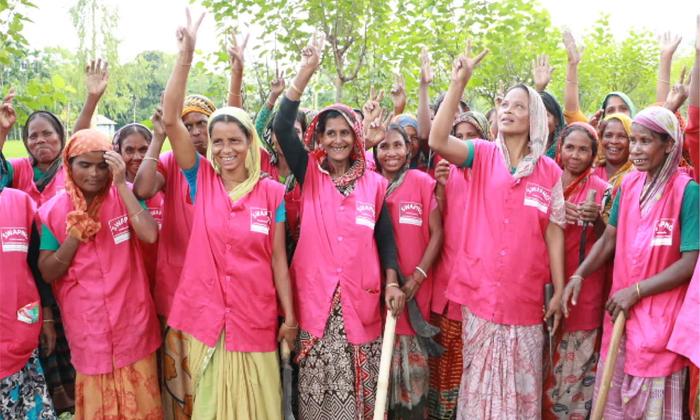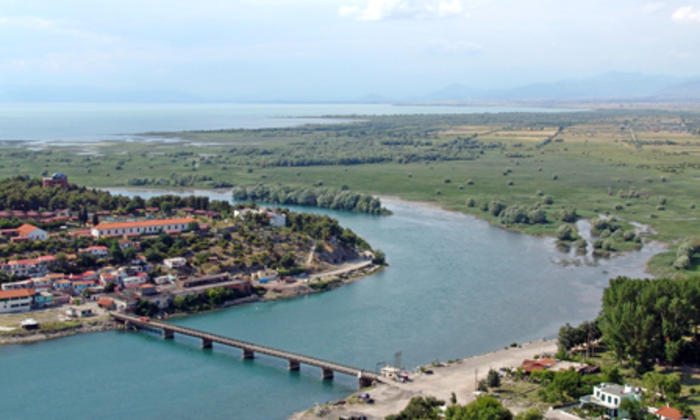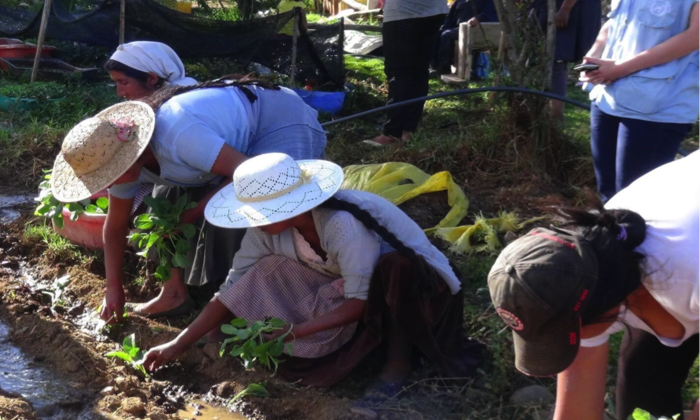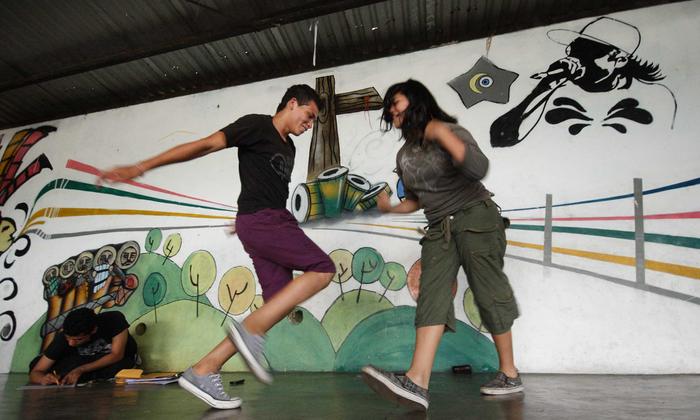In Bosnia and Herzegovina, energy consumption in the building sector comprised 57 per cent of the country’s total energy consumption. The same rate for the European Union stood at 40 per cent
Case study
Energy efficiency and renewable energy sources in Bosnia and Herzegovina
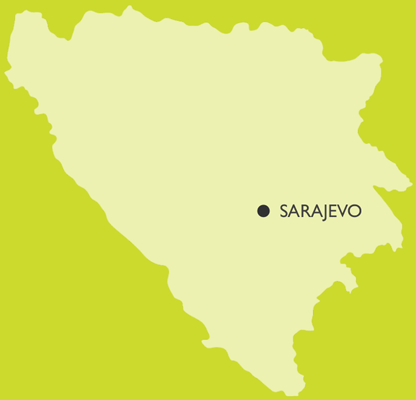
SDGs ADDRESSED
This case study is based on lessons from the joint programme, Mainstreaming environmental governance: linking local and national action in Bosnia and Herzegovina
Read more
Chapters
1. SUMMARY
The goal of the “Mainstreaming environmental governance: linking local and national action programme in Bosnia and Herzegovina” (the Programme) was to boost local management of environmental resources and service delivery by improving environmental governance and developing replicable models for environmental planning. In particular, a multi-pronged approach was chosen to target various stakeholders differently, with a heavy emphasis on the following sub-sectors: energy efficiency (EE), renewable energy sources (RES) and public buildings. The Programme gave grants to municipalities to implement EE/RES projects and highlighted that several smaller-scale projects can have a greater impact as they allow for a decentralization of the benefits (energy savings, health improvements, local economic growth, “green jobs”, awareness-raising, etc.) to be spread across the country.
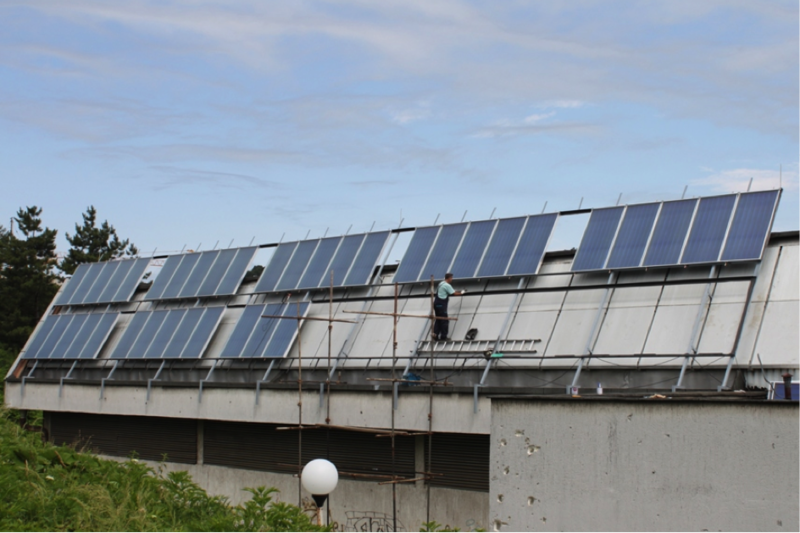
Thermal solar collectors being installed at the sports and culture centre in Tuzla
2. THE SITUATION
Bosnia and Herzegovina suffered from significant economic and environmental loss because of the low energy efficiency standards found in both residential and publicly-managed buildings, which typically had very high expenditures. In addition, owners and decision makers were not sufficiently aware of the situation, nor were they equipped to properly control or manage these energy efficiency costs.
As a country in economic transition, Bosnia and Herzegovina could not afford to have inefficient energy use which directly countered efforts to reduce poverty. Studies showed that energy consumption in the building sector comprised 57 per cent of the country’s total energy consumption. The same rate for the European Union (EU) stood at 40 per cent1. Such statistics are even more important in the global context considering that the building sector is responsible for 74 per cent of worldwide greenhouse gas emissions.
3. STRATEGY
The main objectives of the Programme were to reduce fossil fuel usage, decrease CO2 emissions, and reduce energy costs in public buildings, which would also cut public expenditure. A unique, multi-pronged approach was chosen for tackling these energy issues, with a heavy emphasis on energy efficiency (EE) and renewable energy sources (RES) in public buildings.
The focus on public buildings was deemed a high priority for three major reasons:
- Buildings were responsible for a significant amount of the country’s overall energy consumption;
- The standards of efficiency were quite low, so the relative benefits for any upgrade were high;
- Local authorities and other stakeholders wanted to mainstream these issues in a comprehensive manner.
The Programme allowed municipalities to implement EE/RES projects in public facilities and 28 projects were implemented in the areas of thermal insulation, biomass furnaces, solar panels, and LED street lighting. Municipalities were also strongly encouraged to think and act strategically. The Programme supported the development of Sustainable Energy Action Plans (SEAPs) in fivemunicipalities and Local Environmental Action Plans (LEAPs) in 37 municipalities, and made sure that energy issues were given high priority.
To build in sustainability, an Energy Management Information System (EMIS) was set up so that information of each local EE/RES project could be entered into a national database to highlight the best practices for replication. The long-term objective was to provide the EMIS software to the municipalities so that all public buildings and facilities were integrated into the centralized system. The comprehensive data set generated by this system was to be used to monitor nationwide energy consumption trends, and to encourage future EE/RES efforts in both the public and private sectors. EU integration remained a strong motivation for EE/RES measures in Bosnia and Herzegovina, and the authorities realized that they must raise their local standards to meet international requirements.

4. RESULTS AND IMPACT
Local-level planning was tremendously improved with a large increase in local planning documents, hundreds of local stakeholders trained in local planning and clear guidelines were laid out for future local planners. The management of environmental resources and services was greatly enhanced with many local pilot projects providing role models to stakeholders, including substantial co-financing and ownership from local decision-makers, linkage to returnee and refugee issues, and natural and cultural heritage. Also, national environmental awareness and action linked with the MDGs was particularly successful through the following: development of a first State of Environment Report; analysis of the legal and institutional framework for environmental protection in the country; the creation of a national climate change authority; linkage of reliable indicators with national planning; improved access to environmental information; innovative pilot projects serving as best practices; nationwide energy monitoring of public buildings; entity environmental funds becoming better harmonized; national/entity capacities being strengthened; and “green economy” investment analyses and lessons learned being widely disseminated to ensure future sustainability of the Programme goals. Specific results included:
- Improved local level environmental planning
- Effective local level participatory environmental planning mechanism strengthened;
- Cross-cutting environmental governance methodology integrated into local participatory planning process;
- 37 LEAPs and 5 SEAPs defined and agreed to by municipal stakeholders.
- Enhanced management of environmental resources and delivery of environmental services
- Improved management of environmental resources in municipalities;
- Priority actions identified and addressed in 37 LEAP municipalities;
- Improved environmental, energy, water and sanitation services in 37 municipalities for the poor and also MDGs 6. 7.
- Increased national environmental awareness and action, localizing and achieving the MDGs
- Documentation of the legal and institutional background for environmental governance at the state and entity-levels;
- Reliable environmental indicators to inform state and entity policy development;
- Increased public access to environmental information;
- Expanded access to environmental finance;
- Greater implementation of environmental governance actions demonstrating innovation, poverty reduction and social inclusion approaches and addressing the achievement of MDGs 6,7 and 8 through improved service delivery.
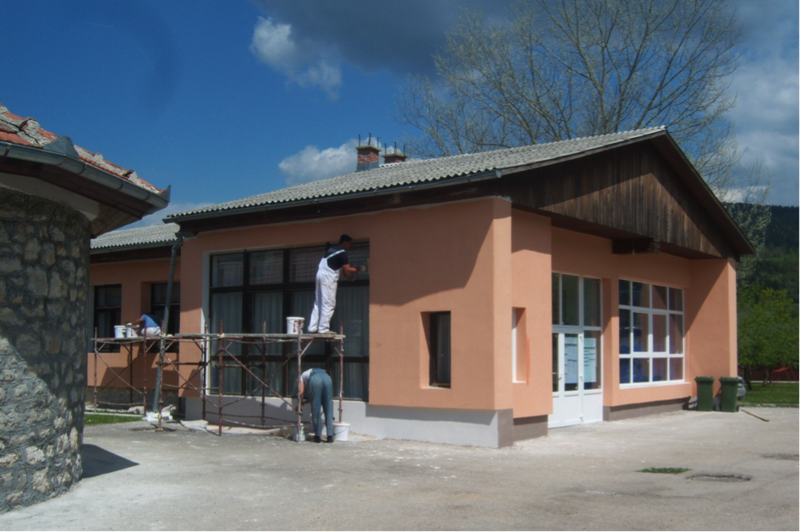
Thermal insulation and new energy-efficient windows being installed at the elementary school in Petrovac-Drinik
5. CHALLENGES
The environment sector in Bosnia and Herzegovina was critically stagnant: there was a lack of environmental policy and legislation, poorly developed management and implementation capacities, little public participation in environmental decision-making and a lack of reliable information and data.
Other challenges included the government structure of the country: a large number of environmental officials at different administration levels, difficult access to many officials and a common practice of not involving all stakeholders in state processes.
The development of LEAPs was long held as a viable standard for addressing issues concerning how society affects its environment. While such strategic planning was a norm within Bosnia and Herzegovina for over a decade, it had been far from consistent and was not proceeding at a regular pace. Laws had been established to require their adoption (either at the municipal or cantonal level), but because environmental matters were typically given a low priority in the country (especially during the global economic crisis), the actual adoption of LEAPs had remained sporadic over the years.
There was a lack of environmental policy and legislation, poorly developed management and implementation capacities, little public participation in environmental decision-making and a lack of reliable information and data
6. LESSONS LEARNED
- When it came to environmental protection, and particularly energy issues, it was not necessarily true that “bigger is better” – i.e. large-scale projects and investments were not necessarily the best solutions. Several smaller-scale projects showed the potential to have a greater impact and be invaluable role models to the rest of the country. It was important to involve local authorities, which showed that the energy sector did not necessarily have to be solely the jurisdiction of higher-level authorities. There were issues which were not exclusively solved through capital infrastructure projects but rather could be effectively addressed via smaller-scale investments, which often had shorter payback periods and more decentralized impacts, providing greater benefit to the local communities.
- Mainstreaming new approaches such as EE/RES in a systematic way allowed for greater uptake and sustainability. The greatest impact achieved by the Programme was that stakeholders at all levels in the government were finally playing a role and taking responsibility for the sector. It was also clear that EE/RES measures helped to reduce poverty in the region, as municipalities and individuals were spending less on energy costs.
- Finally, the importance of local ownership and responsibility could not be overstated. A prime example was that personnel from local communities were the ones who actually maintained the EMIS database, which showed the success of this approach. This was also reflected by the local municipalities, who were co-financing their projects and thereby claiming ownership of the energy issues in their regions.
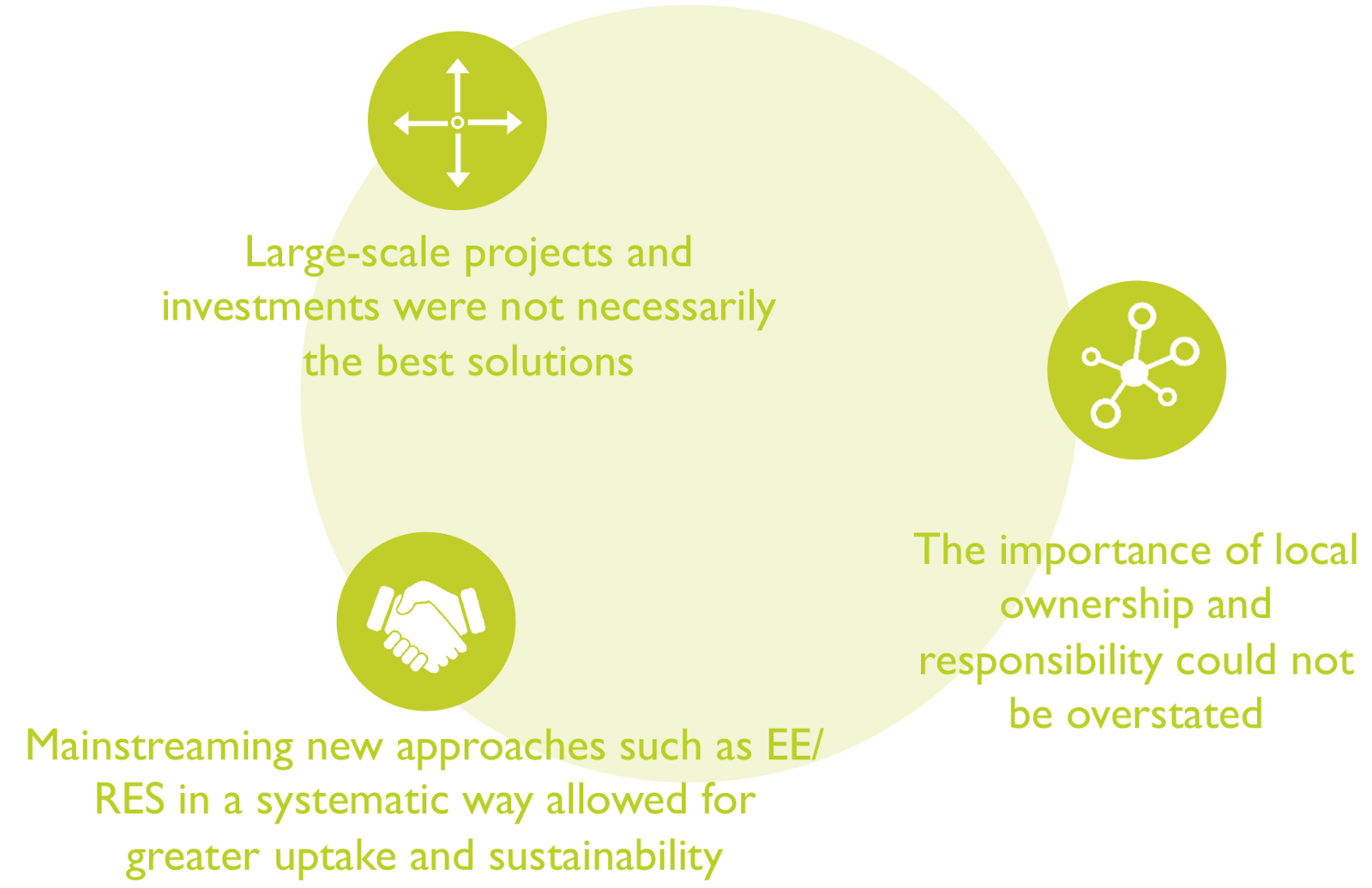
7. SUSTAINABILITY AND POTENTIAL FOR REPLICATION
The Programme’s energy component has strong possibilities for replication, within the country, and worldwide, especially in locations that are undergoing economic transition, have outdated public infrastructure, or a lack of a tradition of energy efficiency and therefore have plenty of room for improvement.
The SEAPs and LEAPS were concepts borrowed from other countries and were designed for easy duplication in other locations. In fact, both types of strategic plans had already started to spread around the country, as other municipalities saw the benefits to long-term planning, even in the energy sector.
The EMIS system proved to be a sustainable concept, as municipal personnel continued to verify data input, or in some cases, even add new entries to the database by integrating data from new public facilities which had not been covered by the Programme. Furthermore, the very existence of such a database provided an archive of evidence showing the real-world benefits (project investment, monetary savings, CO2 reductions, and shorter payback periods) to be gained from EE/RES actions, such as those undertaken by the Programme. This also attests to the viability of such an approach for these issues within the country and elsewhere.
The pilot projects provided practical examples of how to properly implement measures from such plans, regardless of the location. In a country like Bosnia and Herzegovina, they served as innovative ideas for other towns to follow. At the same time, local communities could finally claim ownership of their energy issues without having to wait for higher-level intervention or large-scale investments and donations.
In several cases, municipalities and CSOs that were not even included in the Programme came forward seeking advice on developing their own SEAPs and/or LEAPs, wishing to incorporate their own public buildings within the EMIS system or implementing similar EE/RES measures. This trend bodes well for replication efforts within the county and outside it.
